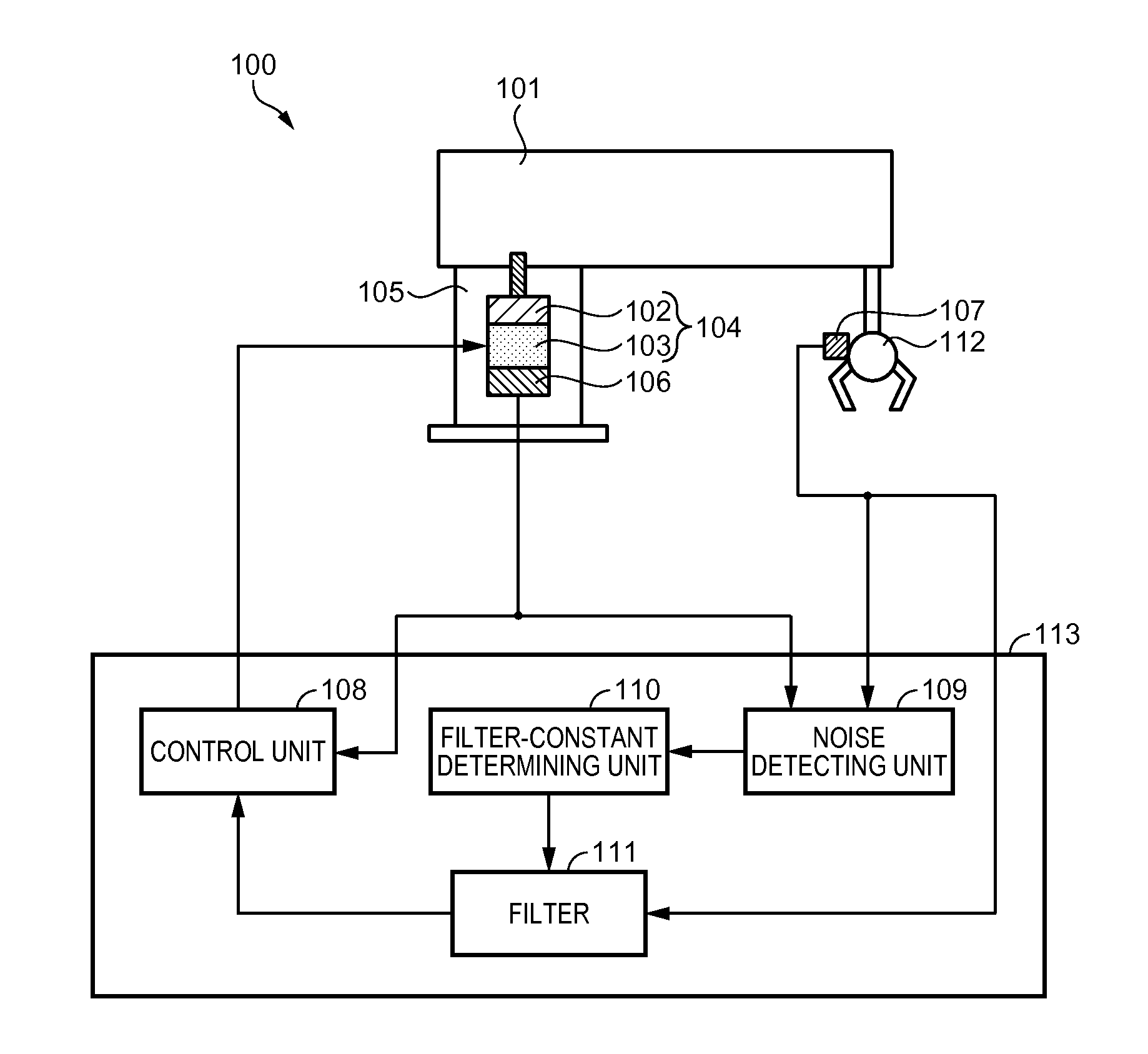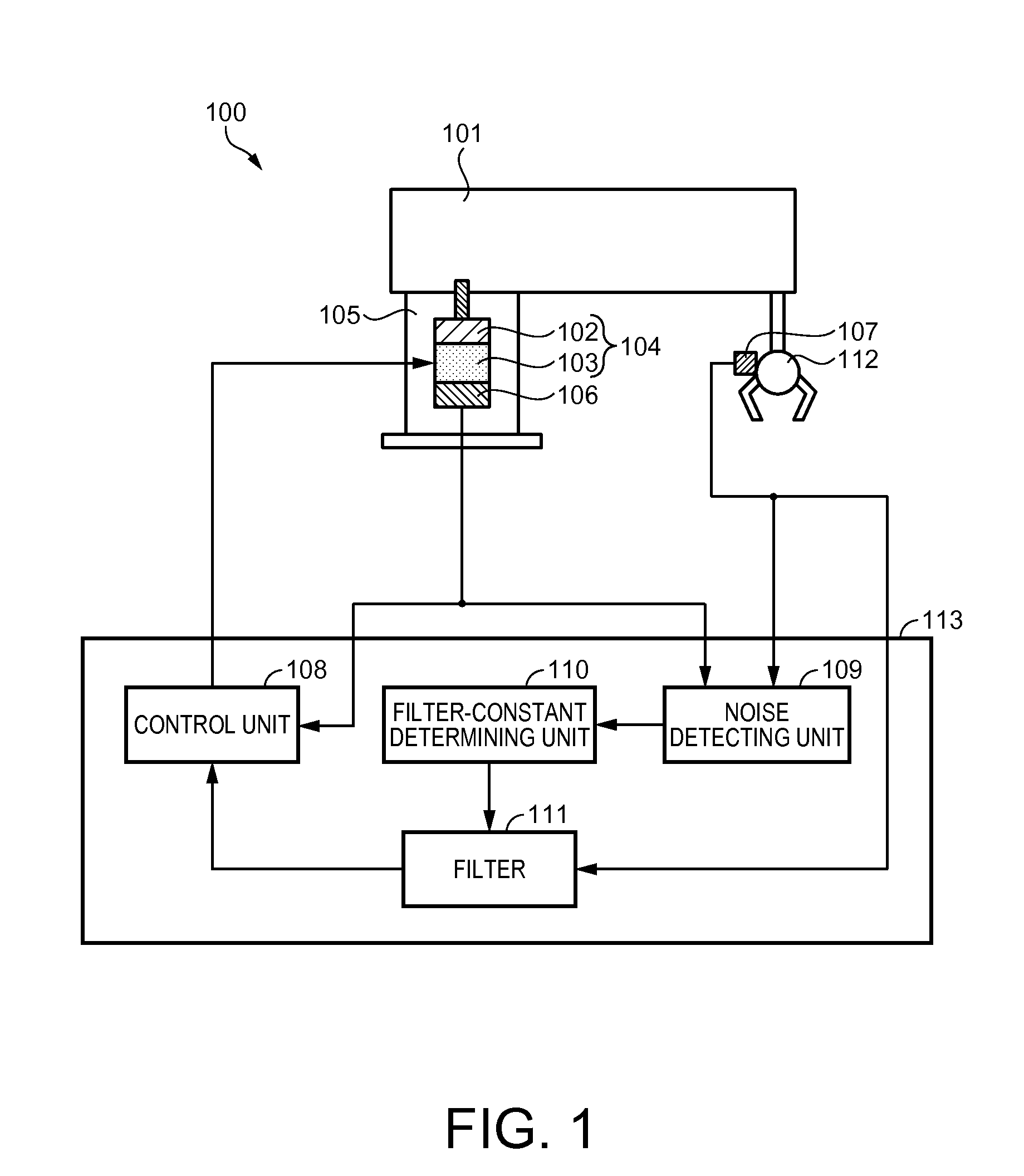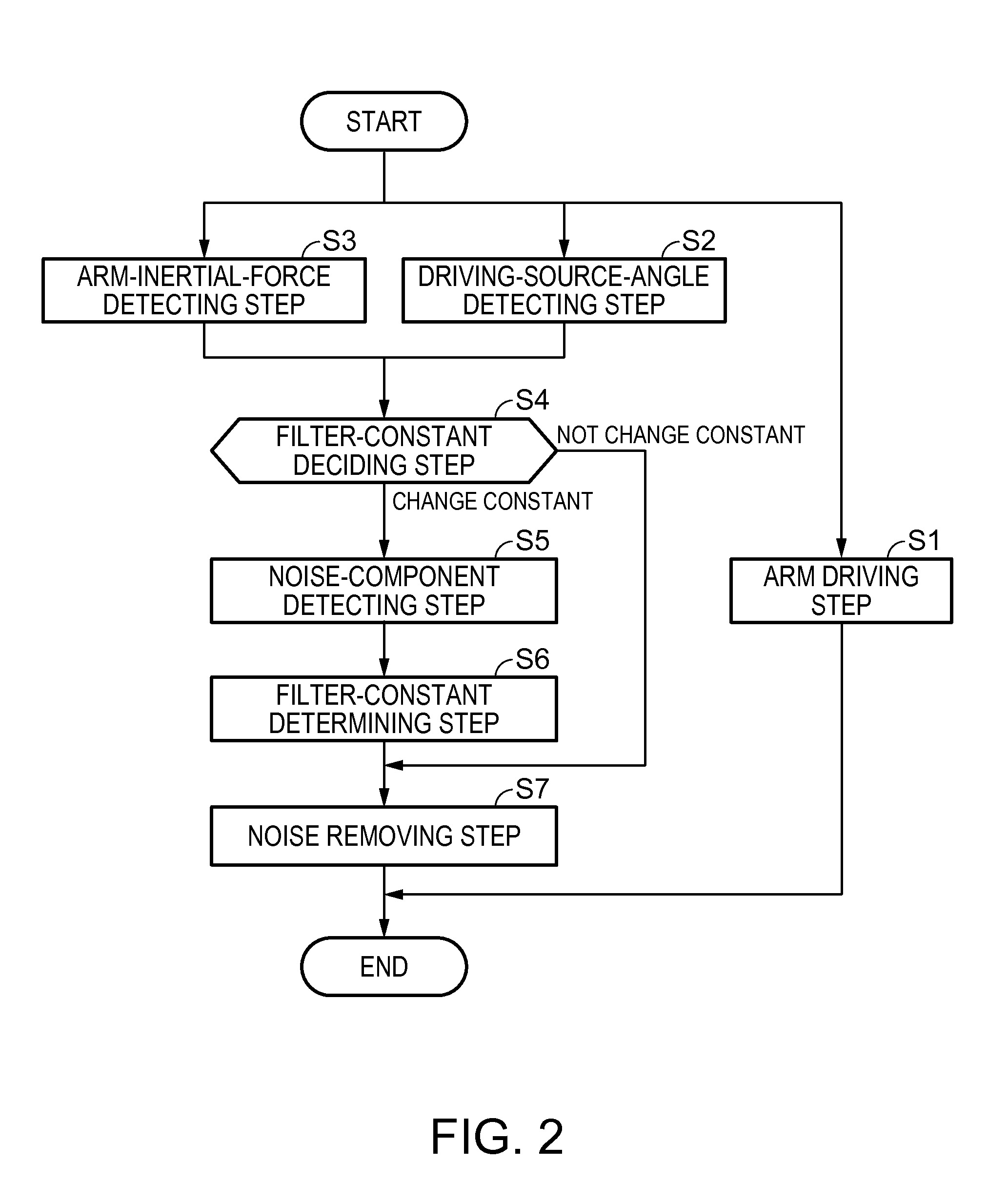Robot and noise removing method for the robot
- Summary
- Abstract
- Description
- Claims
- Application Information
AI Technical Summary
Benefits of technology
Problems solved by technology
Method used
Image
Examples
first embodiment
[0041]In a first embodiment, a robot and a characteristic arm control method performed by the robot are explained with reference to FIG. 1 to FIGS. 4A to 4C. FIG. 1 is a block diagram showing a schematic configuration of a robot according to the first embodiment.
[0042]As shown in FIG. 1, a robot 100 includes a base 105.
[0043]An arm coupling section 104 is set on the inside of the base 105. In the arm coupling section 104, an angle sensor 106, a motor 103 functioning as a driving source, and a torque transmitting mechanism 102 are arranged in this order on the same axis. One end of an output shaft of the motor 103 is connected to the angle sensor 106. The angle sensor 106 includes an encoder and detects a pivoting angle of the motor 103. The other end of the output shaft of the motor 103 is connected to an input shaft of the torque transmitting mechanism 102. The torque transmitting mechanism 102 is a reduction gear that is set to a predetermined reduction ratio. Therefore, a pivotin...
second embodiment
[0075]A robot and a characteristic noise removing method performed by the robot according to a second embodiment are explained with reference to FIG. 5 and FIGS. 6A to 6C. This embodiment is different from the first embodiment in that the number of arms is increased from one to two. An explanation of the similarities to the first embodiment is omitted.
[0076]In this embodiment, the number of arms is two as shown in a block diagram showing a schematic configuration according to the second embodiment of FIG. 5. A robot 500 includes a base 509. In the base 509, a first angle sensor 510, a first motor 504 functioning as a driving source, and a first torque transmitting mechanism 503 are arranged in this order one on top of another on the same axis. The first torque transmitting mechanism 503 and the first motor 504 configure a first arm coupling section 505.
[0077]A first arm 501 is connected to an output shaft of the first torque transmitting mechanism 503. The first arm 501 pivots accor...
modification 1
[0093]In the first embodiment, the robot 100 is a robot of a horizontal multi-joint robot form. However, the form of the robot is not limited to this. The method explained above can be used for robots of various forms such as a vertical multi-joint robot, a Cartesian coordinate robot, and a parallel link robot. In this case, noise of an inertia sensor can be removed using a method same as the method explained above.
[0094]In the case of the Cartesian coordinate robot, since an inertia sensor moves linearly, an acceleration sensor is used. In this case, noise peculiar to the acceleration sensor can be detected using data such as a rotation angle of a rotary motor and a moving distance of a linear motor and an output of the acceleration sensor. The noise of the acceleration sensor can be removed using a filter.
PUM
 Login to View More
Login to View More Abstract
Description
Claims
Application Information
 Login to View More
Login to View More - R&D
- Intellectual Property
- Life Sciences
- Materials
- Tech Scout
- Unparalleled Data Quality
- Higher Quality Content
- 60% Fewer Hallucinations
Browse by: Latest US Patents, China's latest patents, Technical Efficacy Thesaurus, Application Domain, Technology Topic, Popular Technical Reports.
© 2025 PatSnap. All rights reserved.Legal|Privacy policy|Modern Slavery Act Transparency Statement|Sitemap|About US| Contact US: help@patsnap.com



